Encompassing the encyclopaedic Italian gastronomy in a single reading is a difficult challenge. In this article, we have tried to summarise the main Italian delicacies by classifying them into different categories. Italian cuisine can satisfy all tastes from sweet to savoury, from gourmet to street food! For this and other reasons, its culinary tradition is among the most appreciated in the world. Are you ready to read our guide through Italian flavours?

Traditional recipes
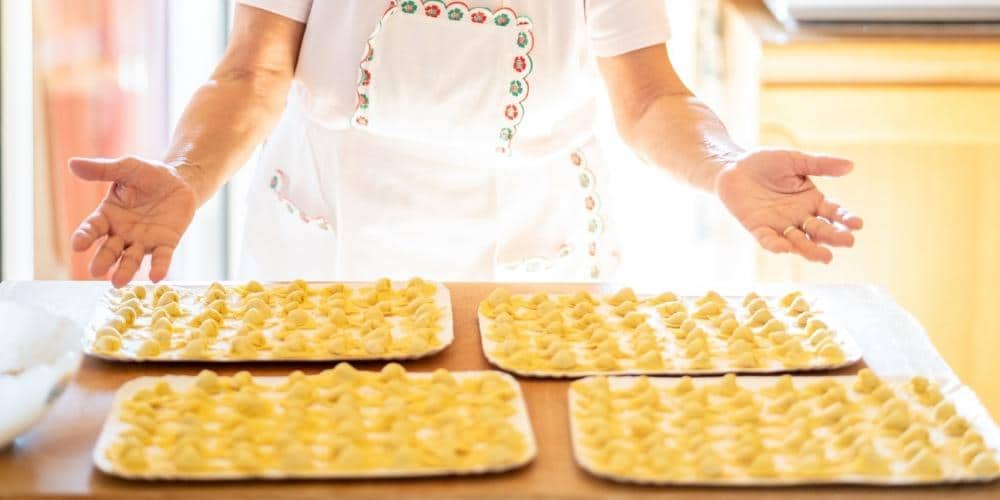
A guide to Italian flavours can only start with tradition. Italian people feel strongly linked to every dish born in the streets and shops, from visionary ideas, mistakes, poor ingredients, customs, and territory. Let's learn about the typical recipes of our tradition from North to South!
Northern Italy
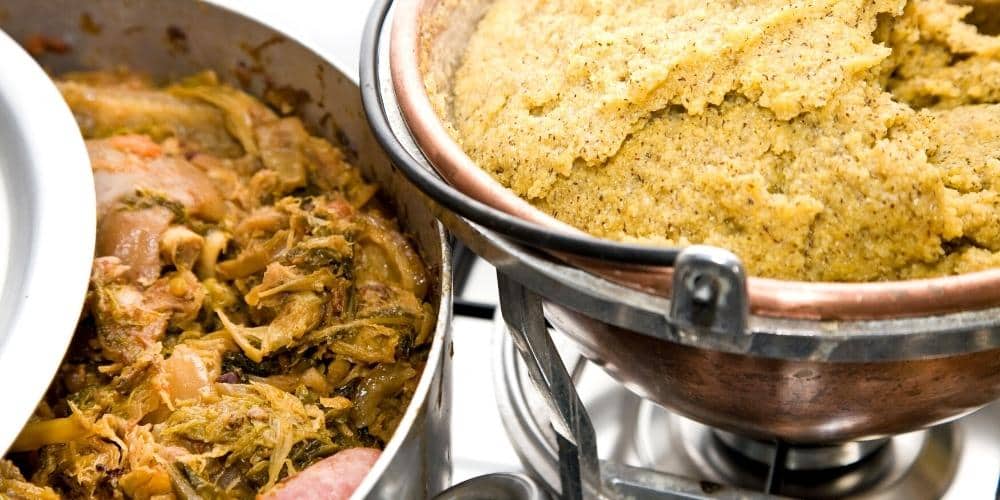
A mostly mountainous landscape characterises Northern Italy, but there are also magnificent lakes and windows to the sea in the outer regions. The alpine terrain is the source of high-quality products, such as fine meats, cheeses and local wines. The thick forests hide the precious truffle, one of the most valuable Italian products in the world, which can also be found in the woods of Central Italy. On the other hand, the lake and maritime areas are home to delicious freshwater and saltwater fish and other marine species typical of the territory. All these products give unique dishes, which sometimes become nationally famous. Polenta is a perfect example. It originated in poor peasant cuisine at the beginning of the 16th century. A versatile food, eaten both sweet and savoury, hot and cold, polenta is typical of Upper Lombardy, Veneto, Piedmont, Val d'Aosta and Friuli. Still, it is widely consumed in the rest of the Peninsula: each region has its own recipe. In Trentino, on the other hand, you must try the canederli, a delicious traditional dish made from leftover bread (nowadays enriched with meat or vegetables, depending on taste) accompanied by a succulent melted butter sauce or excellent broth. Lombardy, then, is the kingdom of saffron risotto, one of the most popular dishes in the region's culinary tradition.
However, this region holds many surprises in the kitchen, with much more unmissable recipes besides risotto, such as the delicious cassoeula. Then, discovering Emilia-Romagna, you can find more tasty Northern recipes. The regional dishes show a history of land and sea, giving the tradition a unique flavour. This region is also home to world-famous culinary delights such as tortellini and piadina. The encounter between land and sea is typical of Venetian cuisine, too. Venetian-style liver and baccalà mantecato (a poor dish that has become a gourmet delicacy) are just two examples. Finally, moving towards the western regions, Liguria offers typical local delicacies, such as focaccia and genoese pesto.
Central Italy
The heart of Italy keeps a culinary tradition that is perhaps less well known than other areas' but equally precious and tasty. In Umbria, for example, we find the most prized varieties of truffles and numerous creative and traditional recipes made with them. On the other hand, Lazio keeps one of the nation's symbolic dishes: carbonara. The original recipe has been extensively discussed as well as the dish native place. However, at least in the common imagination, the capital city holds the record as the birthplace of the best Italian carbonara. However, we can suggest at least 10 must-try foods in Rome apart from it. Bucatini all'amatriciana and tonnarelli cacio e pepe are just two examples. Then, try to explore the gastronomy of the Marche: it means taking a journey through a thousand flavours of traditional products and dishes. The Marche region cuisine is as varied as its splendid landscapes. We can say the same for the wonderful Tuscany, a region renowned for its immense food and wine culture. Among the most famous and typical dishes, we mention acquacotta, pappa al pomodoro, panforte and cantuccini.
Southern Italy

Sea, sun and love: Southern Italy borders with the magnificent waters of the Mediterranean Sea and embraces a hinterland made of breathtaking landscapes. It has an exceptionally mild climate and a population renowned for its hospitality. The recipes of the southern regions reflect these characteristics in their dishes. Starting from Abruzzo, you can't miss the charm of this region, which keeps one of Italy's most beautiful natural areas. It is the land of sugared almonds, arrosticini and many traditional recipes. Molise is Italy's penultimate region in terms of size. It has mostly agricultural and pastoral cuisine, often blending with neighbouring areas. Wines, pulses, cheeses, fresh meats and cold cuts, vegetables, eggs, spices and cereals: the frugality of Molise's gastronomy will surprise you with its unexpected but straightforward taste, which focuses mainly on the flavours of agricultural products. The cuisine of Basilicata is in a similar vein, based on simple products of the land, primarily vegetables, pulses and cheese. It is also worth mentioning one of the region's most famous products, considered a Made in Italy excellence: Matera bread. Both regions often take their cue from the neighbours Campania and Apulia.
The former has a wide variety of typical products and dishes. Some are richer, prepared with fresh fish from the Gulf, while others are more connected to the land and its products. We mention the famous spaghetti alla Nerano, a typical Sorrento coast dish with courgettes, cheese and pepper. Its secret lies in the products quality and the simplicity of the flavour, just like all the other exquisite Campania courses. The Sorrento and Amalfi coasts boast some of the world's most popular local specialities, including colatura di alici and limoncello. In Caserta, instead, we find the world-famous mozzarella di bufala, a delicacy indeed. Still, we have to mention Naples with its unmissable traditional recipes, the Cilento region, a UNESCO World Heritage Site and a land of ancient flavours, and the Sannio region, with its rich food and wine tradition. Finally, this region also embraces three tiny jewels: the islands of Ischia, Procida and Capri. The island's culinary tradition does not deviate from the dogmas of the mainland and focuses on simplicity and the quality of local products. The magnificent Apulia offers products and dishes with unique flavours, just like Campania. The curled octopus is a typical Bari recipe that manages to put all the taste of our sea on the plate. However, the region's gastronomy symbol is undoubtedly the orecchiette with turnip greens. As far as regional specialties are concerned, we have to mention the famous Apulian taralli, a tasty snack made with excellent local olive oil, and the bread of Altamura, whose fame echoed back to Roman times. Finally, we close with Calabria, whose cuisine is mainly based on poor, peasant dishes giving an unmistakable and unconventional spicy taste: this region is the kingdom of the famous 'nduja.
The two islands
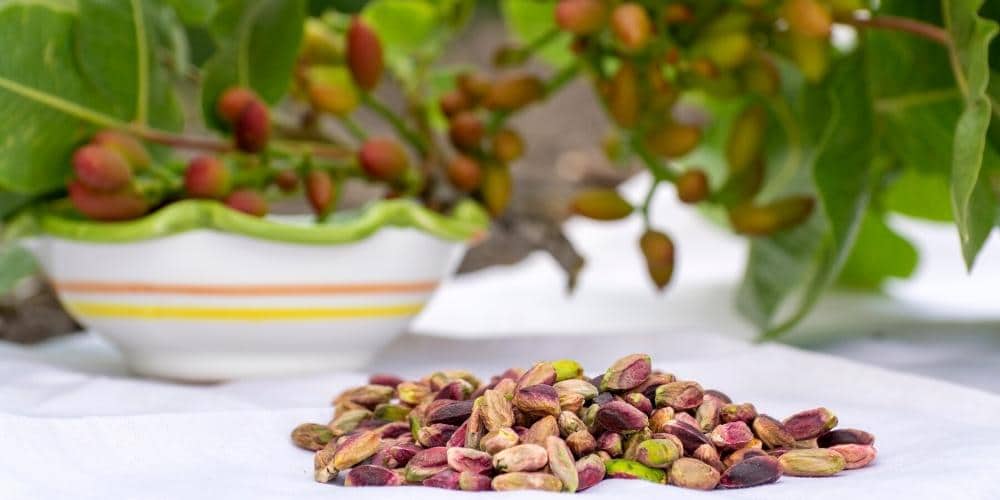
Sicily and Sardinia have an immense and rich culinary heritage: our major islands present unique gastronomy. It is significantly linked to tradition, from the sea to the land, from poor products to the most refined ones. If you are travelling to Sicily, there are some unmissable dishes that you must try at least once in your life: their taste will catch you! This magnificent island encompasses a varied territory, rich in landscapes that are very different from one another and tied to its own age-old traditions. The regional cuisine reflects this characteristic. In particular, Palermo is home to curious gastronomic traditions linked to local festivities: it's an unconventional version of Sicily! Then, we can just make a list: arancini, cassata, cannolo, swordfish rolls, granita, pistachio of Bronte, caponata, pesto alla Trapanese and much more. The Sicilian delicacies list city by city, including dishes and typical products, is truly endless! The other stunning Italian major island can stand up to comparison.
Sardinian gastronomy features numerous local specialties, all of which are linked to island life and reflect the authenticity of its unspoilt nature. Among the most famous and delicious products and dishes, we mention carasau bread and gallurese soup.
Our wine-growing tradition
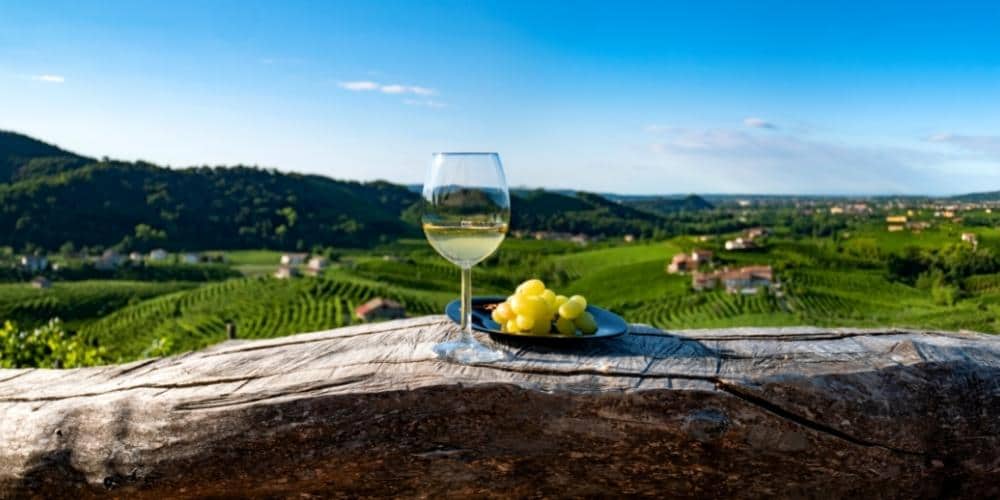
Here are 21 must-see itineraries around Italy if you love good wine. Each region is home to its own prestigious and renowned viticulture, producing wines that offer an immense variety of aromas, flavours and traditions. In particular, Piedmont is one of the Italian regions that best represents the history and culture of Italian wine, producing and exporting excellent quality bottles. It competes with Tuscany, the other great bastion of Italian wine-growing culture. This region presents a hilly landscape of rare beauty and produces many wines awarded as Made in Italy excellence. Moreover, Campania (with the Irpinia and Cilento areas), Sicily, Marche, Veneto: all the other Italian regions can offer a savoury glass of wine to satisfy your palate!
Desserts
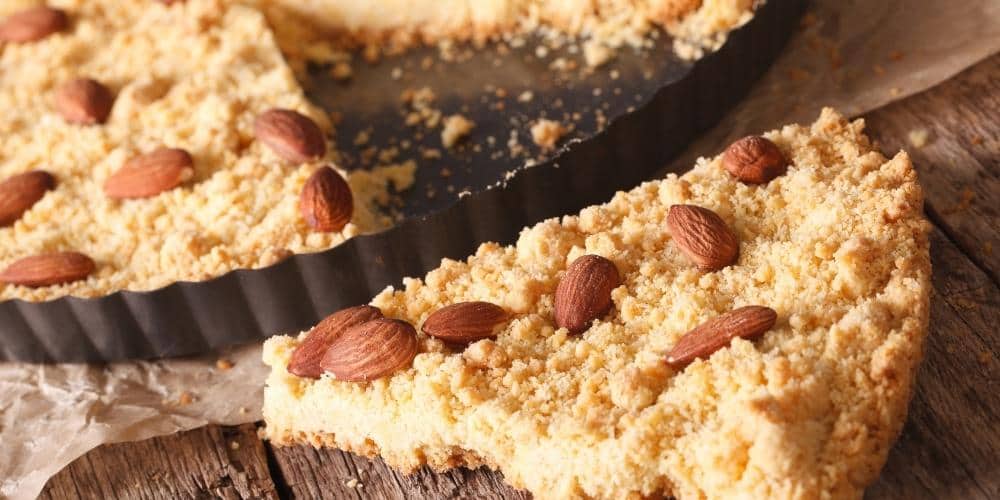
Italian pastry is full of traditional mouth-watering recipes, sometimes originating from curious customs or kitchen messes. Caprese cake and panettone are two perfect examples. According to old stories, these desserts were born from cooking errors. However, both have now become popular Italian desserts worldwide. In particular, panettone is the protagonist of Christmas festivities. Every year the same question: will Italians eat Panettone (Milan) or Pandoro (Verona)? Most are unsure, but both sweets are widely consumed in all Italian homes. The city of Romeo and Juliet keeps many delicious confectionery traditions linked to the festive season, too. For example, the romantic baci (kisses), Valentine's Day biscuits dedicated to the city's symbolic Shakespearean lovers.
It is impossible not to mention the Italian dessert par excellence: tiramisu. This dessert knows no definite regional origin. Nonetheless, it is undoubtedly one of the most appreciated and replicated desserts worldwide. Torrone (Nougat) is another dessert that does not have a "fixed abode". The most delicious nougat varieties can be found in many Italian regions throughout the country. Among the countless desserts that remain 'faithful' to their place of birth are Lucca's buccellato, a sweet bread typical of the Tuscan city, and Venetian pastries with a series of exquisite desserts typical of the lagoon.
Moreover, we cannot avoid mentioning the Neapolitan pastiera, the Sicilian cannolo, the Roman maritozzo, the Apulian pasticciotto, the Mantuan sbrisolona, the Sardinian sebadas, the Trentino strudel, the Ferrara torta tenerina and much, much more. In short, the list of prestigious Italian confectionery production can never be exhaustive. On the other hand, its precious quality and the passionate dedication that Italy's best pastry chefs put into their work was rewarded last year: Italy was named World Pastry Champion 2021!
The festivities

The festive season creates the perfect opportunity to savour traditional dishes and desserts. Let's start with Christmas. During the long period of Christmas celebrations in Italy, each family gathers in the warmth of its home preparing lavish banquets with typical holidays dishes. Each region has its own traditional meal, such as the Christmas lunch in Lombardy: fresh pasta, meat, and panettone are a must! In Neapolitan homes, on the other hand, the king of Christmas tradition is the long eel: strictly bought and cooked while still alive! As far as desserts are concerned, apart from the already mentioned diatribe between panettone and pandoro, the Trentino Alto Adige region keeps a delicious Christmas dessert: the zelten, with ancient history and unmistakable aroma. Finally, the Epiphany marks the end of this festive season. So why not say goodbye with one last sweet treat? In addition to the typical stockings filled with candies and chocolates brought as gifts to children, Italy also has 6 January traditional desserts that vary from region to region: biscuits, cakes and fried dough, you'll be spoilt for choice.
Easter holidays are shorter but no less intense at the table! Abundant first courses and traditionally lamb-based second courses are a must, although there are some regional or local exceptions. In Piedmont, for example, it is customary to prepare beef braised in Barolo. Filled rustic cakes are typical of these festivities, too. The Neapolitan casatiello and the Ligurian torta pasqualina are just two examples. To round off the Easter meal, dessert is a must. In addition to the traditional chocolate eggs, there are countless traditional regional Easter desserts, including the Neapolitan pastiera, the Sicilian cuddura, the Piedmontese Easter ciambella, the Romagna tagliolina cake, the Tuscan pan di Ramerino, the Apulian sweet taralli and the Calabrian pitte pie.
Finally, also the Italian carnival is celebrated with tasty traditional dishes. Delicious first courses, meat dishes, and desserts are guaranteed! In particular, each region from North to South has its traditional carnival dessert to accompany the fun-filled festival. Among them, we mention Tyrolean strauben, Neapolitan struffoli, cicerchiata (central regions), frappe from Lazio and Campania (but then replicated in almost all of Italy), Trentino apple fritters and Neapolitan zeppole di San Giuseppe. There is something to suit everyone's fancy!
Tips

Creativity beyond tradition: Italian gastronomy is full of surprises! Here are just a few. If you don't eat animal proteins and their derivatives, you don't have to give up tasty Italian dishes. There are at least 10 recipes for an Italian vegan dinner. Moreover, if you are an autumn lover, you should try the best chestnut recipes around the Peninsula.
Then, if you are brave enough to check your chef-like skills, you can draw on your culinary imagination to create many delicious homemade recipes. For example, you can try making delicious homemade pasta, a tradition handed down for centuries by Italian families. On the other hand, if you are looking for culinary experiences to satisfy your refined palate, there is no shortage of gourmet recipes and products in Italy that a good connoisseur of cuisine cannot miss, such as the renowned white truffle of Alba.
Finally, here are two tips for great food and drink pairings: 10 pizza and beer combinations preferred by Italians and 3 typical Umbrian recipes paired with as many regional wines.
Street food
Italian food is always excellent and never ordinary, whether eaten seated or by walking around the city. Our street cuisine was born from creative ideas, and even traditional dishes are often turned into street food. From North to South, there are at least 10 must-try street food in Italy. Sweet, savoury, fried, or baked products lovers will all be satisfied! A complete list of Italian street food is an ambitious project, but we will give you suggestions about the must-try delicacies and where to find them!
Apulian street food includes pasticciotti, pucce, and the fabulous focaccia from Bari. In Campania, on the other hand, we find the worldwide known pizza a portafoglio and the very famous fried cuoppo. In Sicily, Palermo's street food is dominated by arancina and pani ca meusa. Along the Peninsula, in the cities streets, you can taste the pinassa ligure, bread with honey and lard (Valle d'Aosta), the miasse (Piedmont), the krapfen (Trentino), the baccalà alla vicentina (Veneto), the putizza (Friuli), the baci di dama (Piedmont), the panadas (Sardinia), the supplì (Lazio) and much more. In short, you don't have to sit in a restaurant to enjoy typical local delicacies. Sometimes it's nice to experience the adventurous side of cities. Ultimately, we can say that you don't run the risk of starving while walking Italian streets!
Italian gastronomy in the world
There are at least five reasons why Italian food is the most popular in the world and, after our trip into the gastronomic flavours of the Peninsula, you can see why. Italian cuisine fully reflects the canons of the Mediterranean Diet and boasts iconic foods that are appreciated nationally and internationally, such as pasta and pizza (UNESCO Intangible Cultural Heritage). In short, we wanted to underline how Italian cuisine can fuse flavour, quality, tradition, inventiveness and passion, giving life to incomparable recipes that catch one's heart at first taste!
Have we forgotten a recipe you particularly care about? Leave a comment!
About the author
Written on 08/01/2022


Sabrina Fabozzi
Here is (almost) all Italian food and wine in one article. Try to read it read in one go!